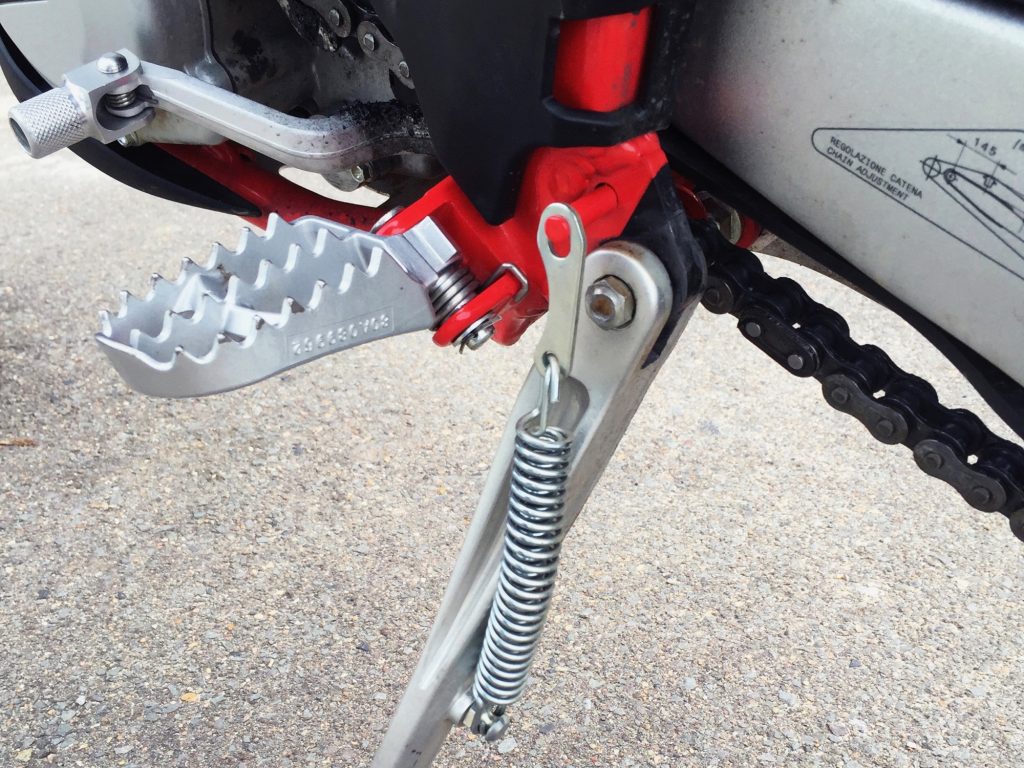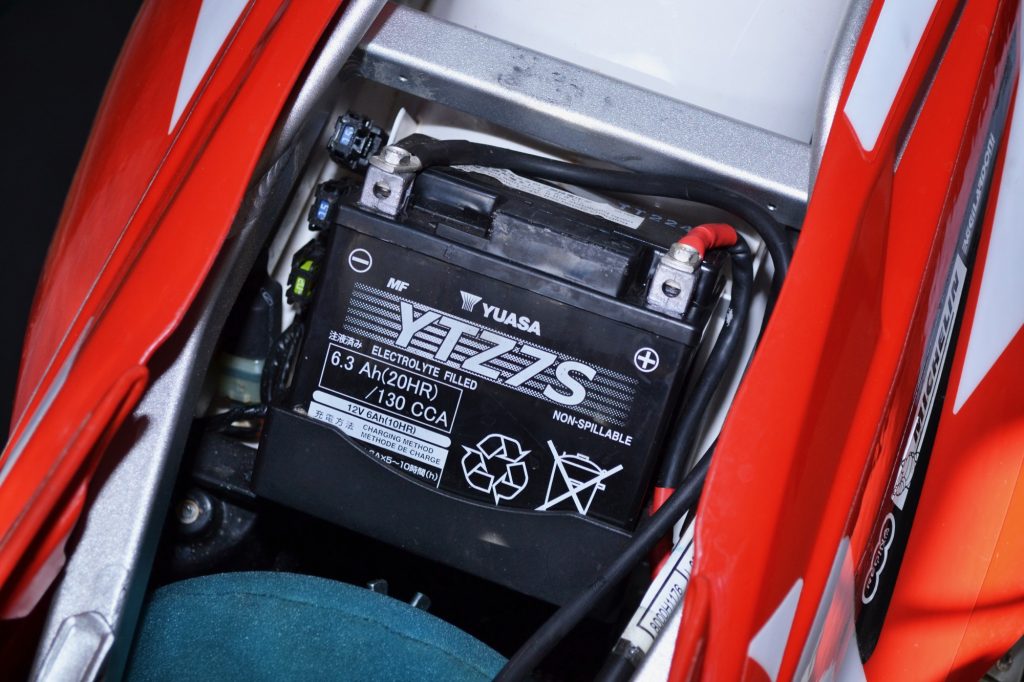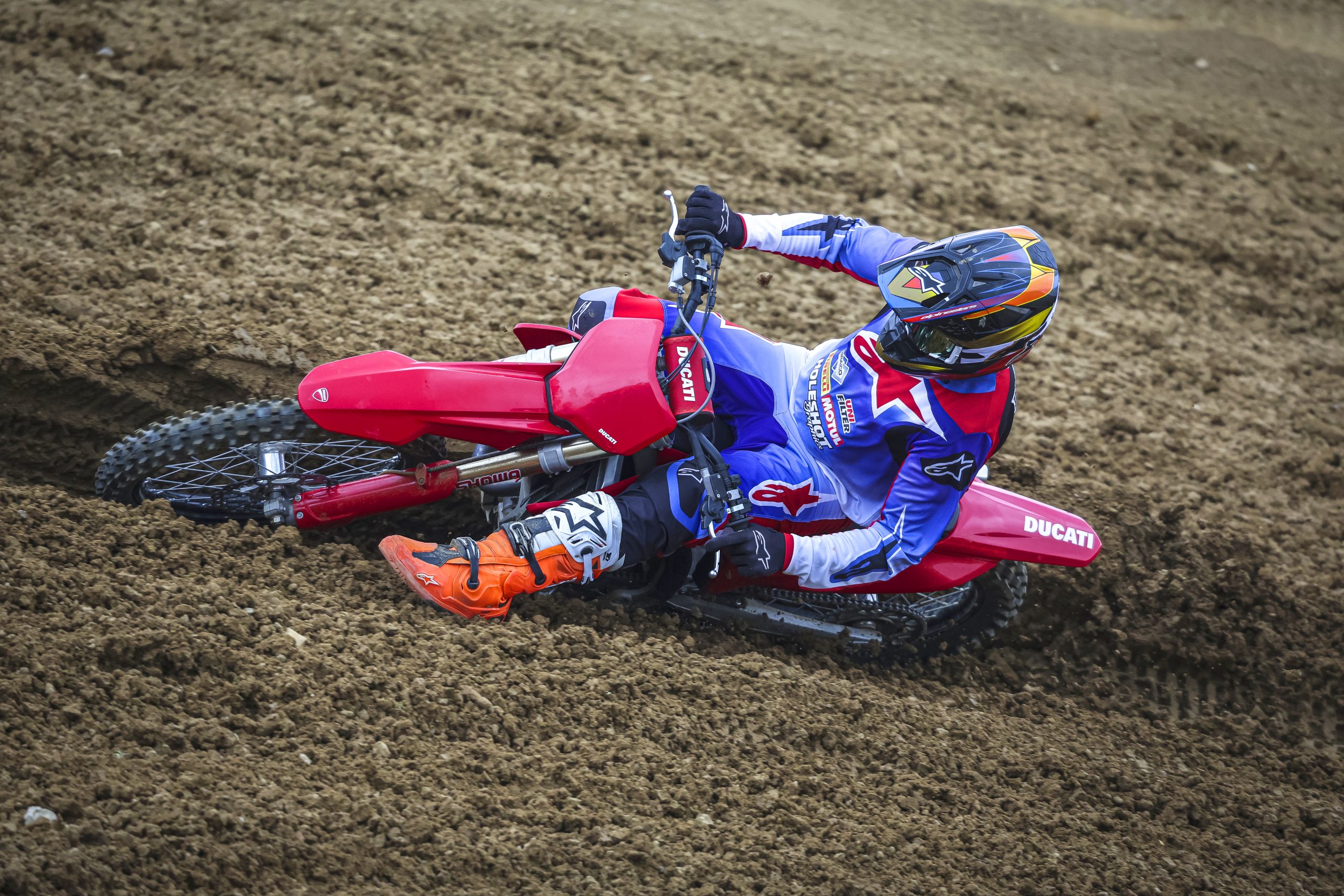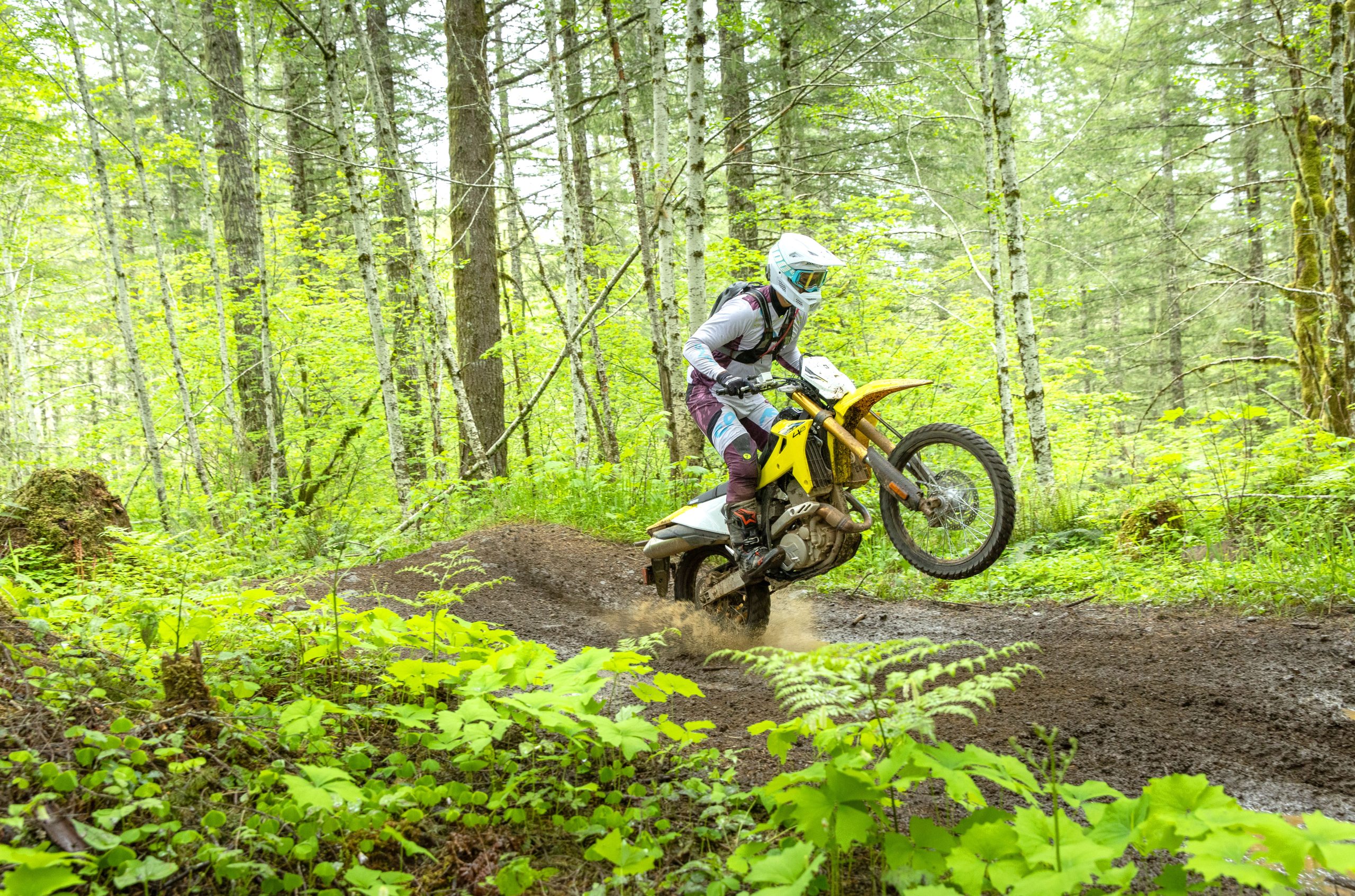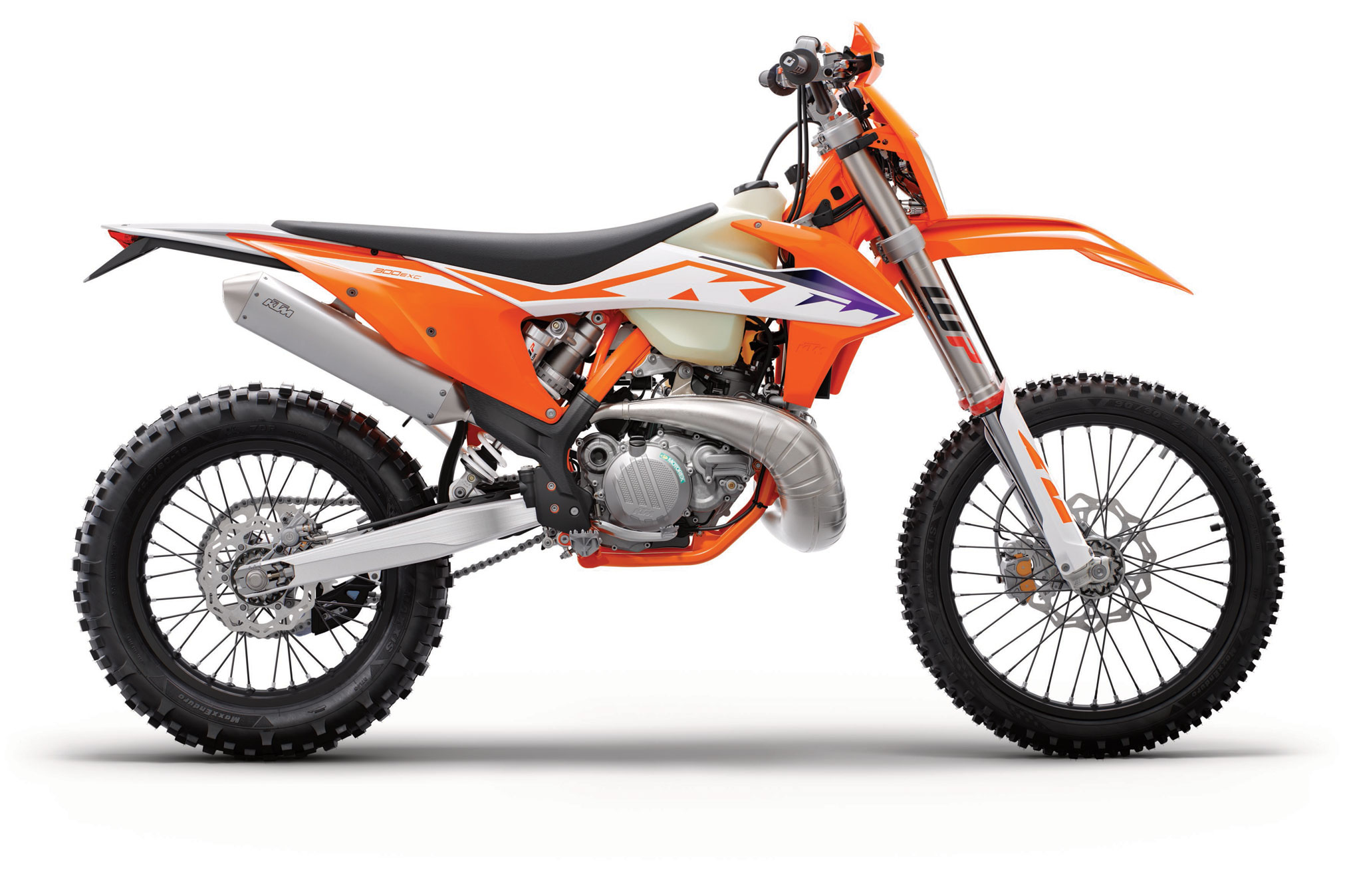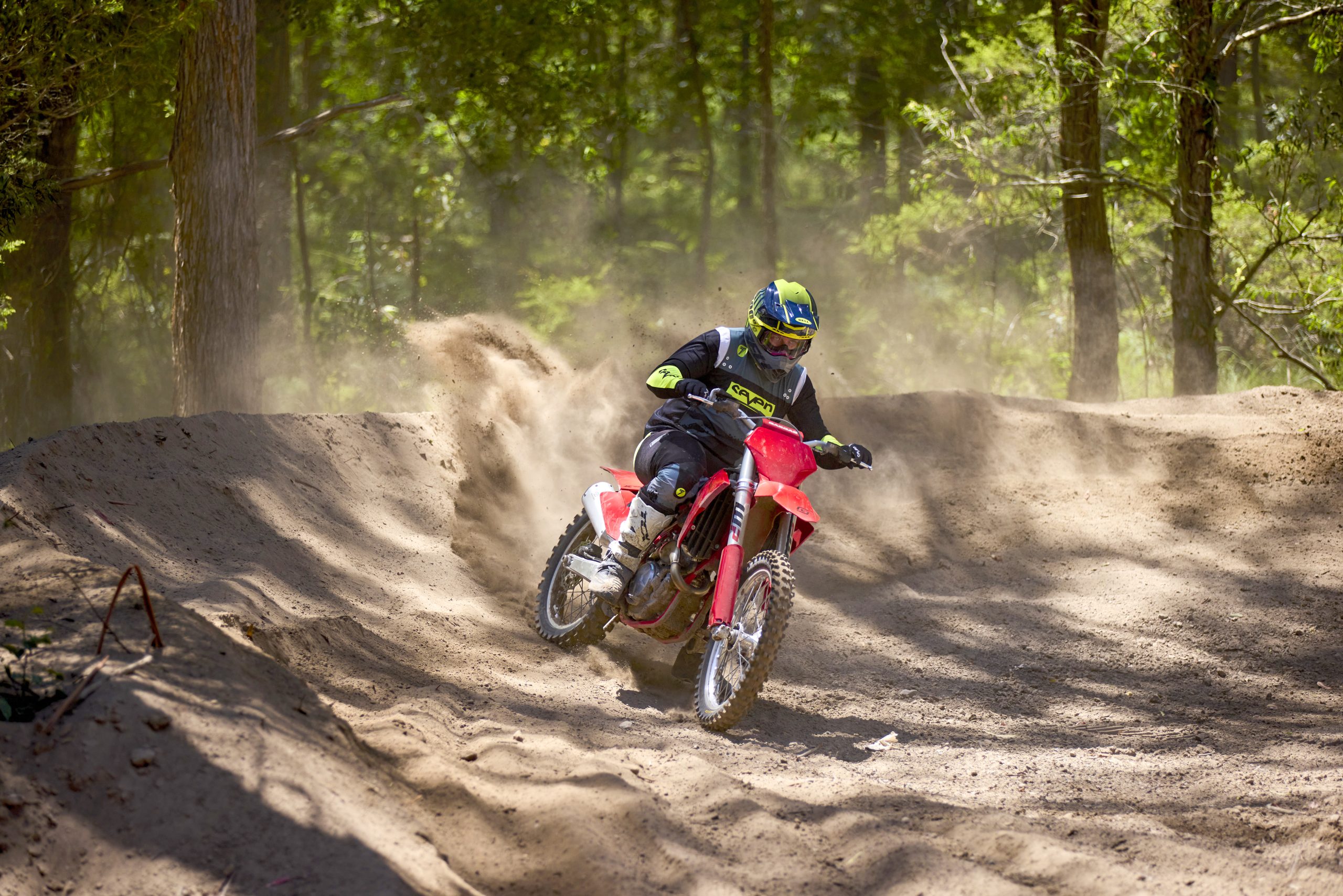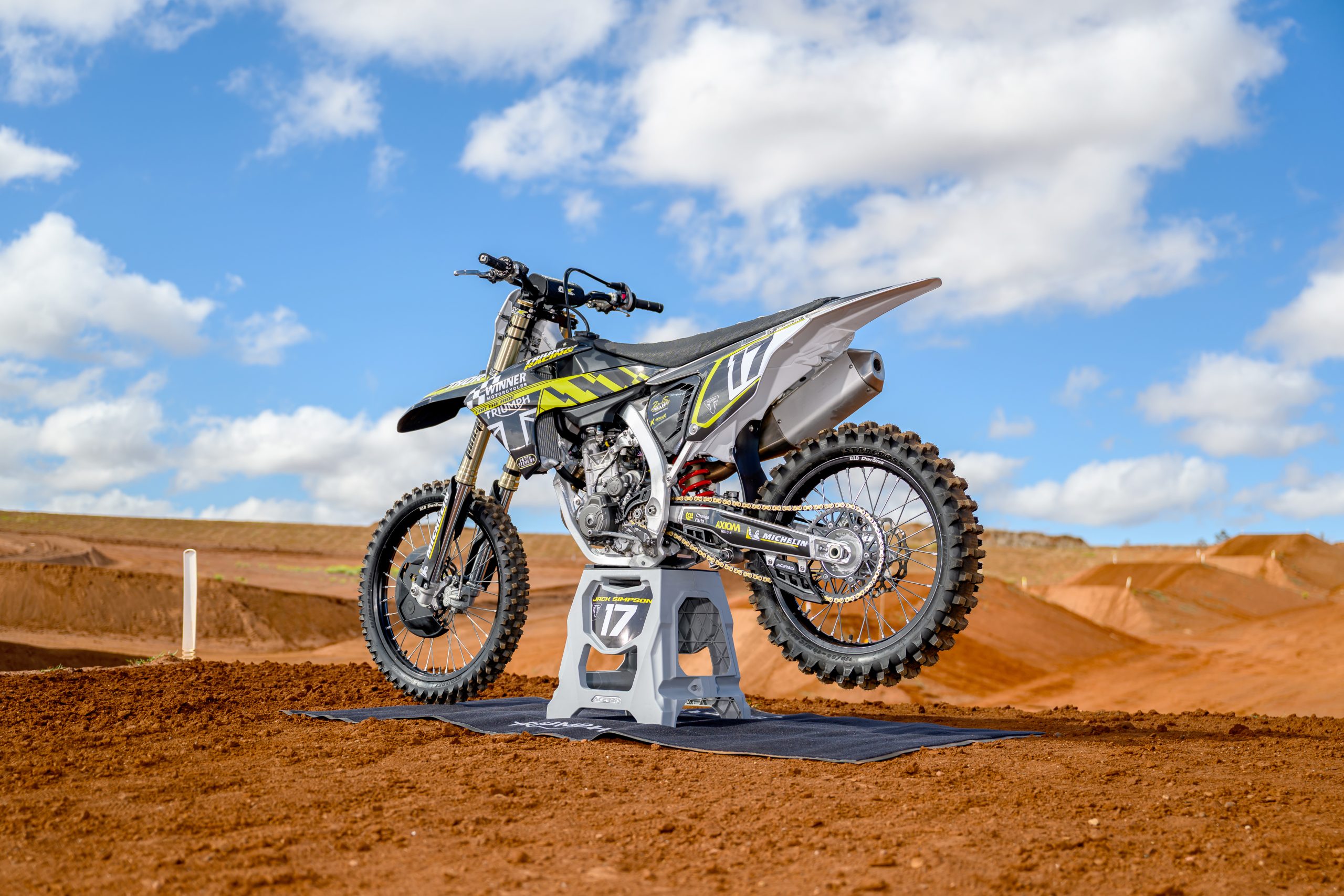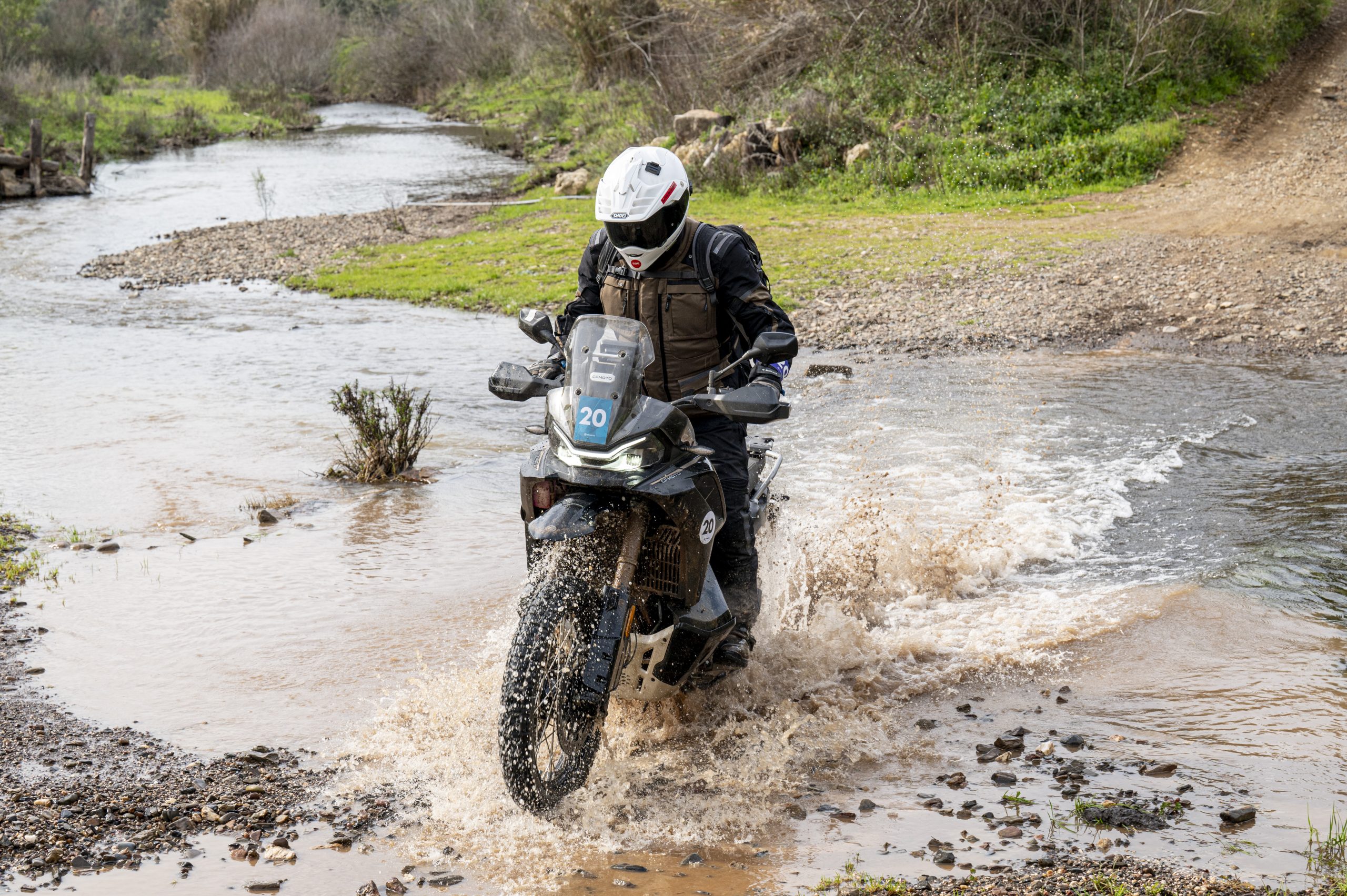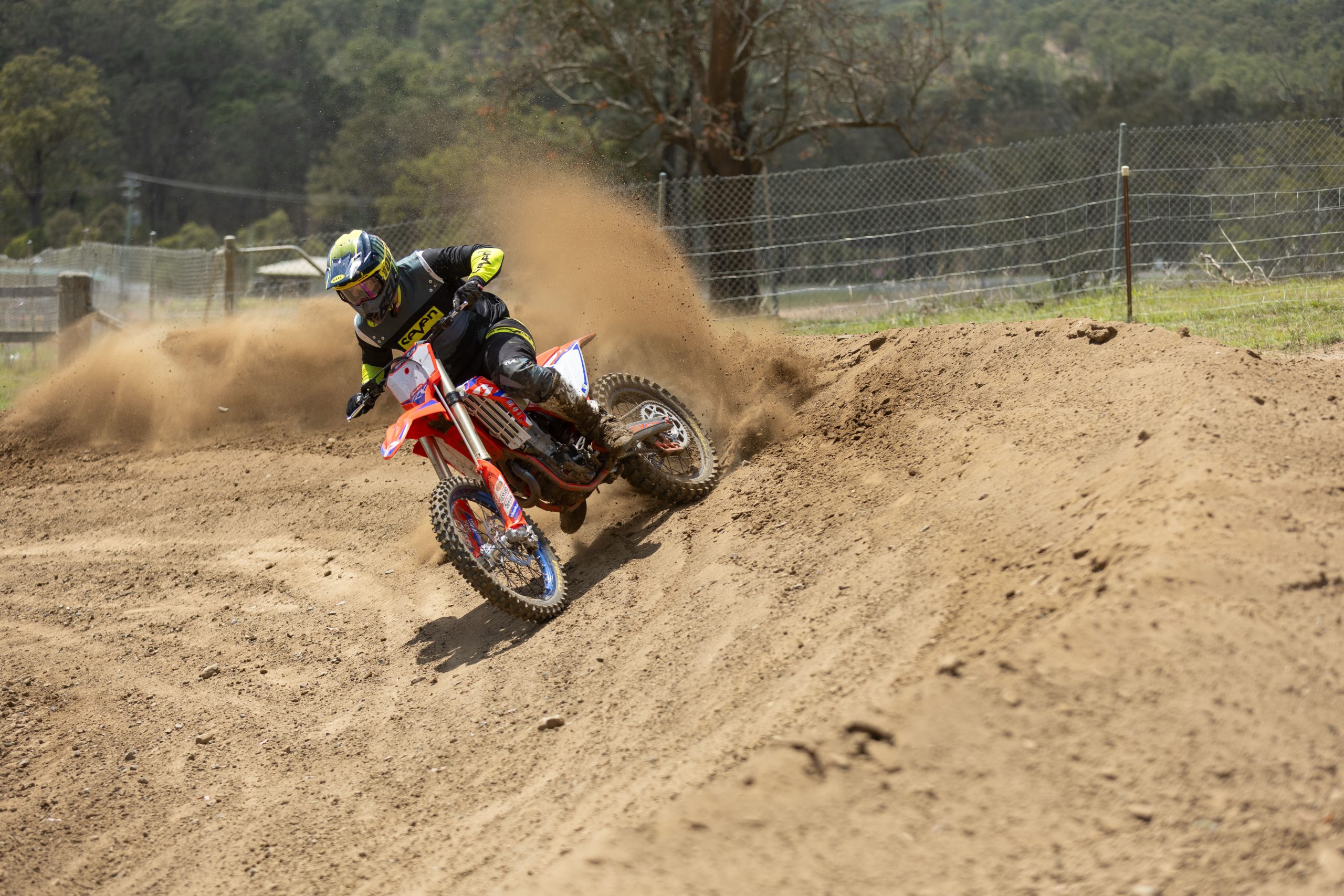THIS UPDATE WAS PUBLISHED IN ADB ISSUE #457 – OCTOBER 2017
Since trying some new mapping specs developed by SWM Australia, the RS500R’s power delivery has been boosted, in particular from the mid-range up to the tall gears, the power coming on harder and cleaner from around 3500rpm and then really getting going from 5500 up.
The power delivery is clean and strong and has helped make the bike an even more fun trailriding tool in open conditions, which is where the big red bomber is most at home. With taller 14/45 gearing, the motor is more enjoyable to ride and less vibey on open trails.
In the tight stuff, the new map has helped clean up some of the readiness of the big thumper to flame-out in real gnarly going, when you’re hard-on, hard-off and then hard-on the throttle again in second and third gears when having a go in tight singletrack.
I wouldn’t say the map has cured the trait, but it’s improved. SWM Australia has since told us the boys at Rush Adventure Tours have been testing an RS500R alongside their regular fleet of Shercos, and will be working a little more mapping magic on the Italian stallion for tight tracks.
A sweet set-up would be having two maps, one for open trail and one for singletrack, and being able to swap between them using a map switch or by disconnecting the map plug in the loom behind the headlight. The new map hasn’t altered the bike’s thirst, the fuel light still coming on at around 125km and the tank taking just on six litres to fill, giving just shy of 21km/L and a range of around 145km to absolute bone dry.
With almost 1500km on the odo, the stock Michelin Enduro Competition rear tyre is fairly worn and while there’s plenty of meat left up front, new back rubber is in order for the upcoming DSMRA Denman and Canberra-to-Tumut trailrides.
Being the old-school trailrider I am, I happened upon a set of ever-faithful Dunlop D952s at a cracker price and they’ve just arrived, so I’ve got a night in the shed real soon fitting them up (knuckles beware!)
TWO MAPS
Taking a tip from the crew at SWM dealership MRD Motorcycles, I opted for a 120/90×18 rear, rather than the beefy 140/80 stock hoop.
Speaking of rubber, I’ve got my bumbag sorted with tools to get the SWM’s wheels out for trailside tube repair/replacements. The front axle is held in place by four 10mm pinch bolts, so you can get them with a socket or ringy, and then you need a 12mm hex key to help turn the axle out. At the back the axle has a 27mm nut, so I’ve got a socket and drive for that one, plus spanners for the chain adjusters at the end of the swingarm, along with my faithful old Metzeler levers.
I generally carry a single 21-inch front tube for use in either wheel should a swap be required in the bush, as well as a tube repair kit, CO2 cartridges and bicycle pump for inflation. Routine maintenance has so far been just that, routine.
It’s well advised to keep a close watch on all the fasteners, including items like the sprocket bolts, engine mounts, shock and linkage bolts, gearlever, sub-frame mounts and the battery terminals, just to catch anything before it vibrates loose.
And here’s a bonus maintenance tip: a rag on the SWM’s wide front guard with its V-shaped top just beneath the headlight makes a neat parts holder while working on the front-end of the bike. Handy.
When cleaning the bike, removing the bodywork helps to get the job done properly. Boasting a hefty dose of Italian design flair, the plastics have plenty of angles and ribs on the undersides, making for many nooks and crannies to be cleaned.
The tank shrouds and sideplates come off readily enough, but when refitting, be sure to align the various parts properly using the tabs and recesses they fit into, as they are easy tbe careful Then be careful screwing in any fasteners that go into brass thread inserts, especially in the tank. If you go too hard and spin any of the inserts in the tank, they can be a right pain.
Finally, there are times when design overrules function. The SWM’s sidestand is an example. It’s slender, sleek and tucks oh-so-sweetly against the bike when retracted. But in use, the stand is long and grounds out before it’s fully extended. Then when you get the bike onto the stand, the angle is very upright and the foot is close to the bike, so extra care has to be taken when parking on uneven ground, plus the small and angular foot cuts easily into soft ground. Andrew Clubb
SO FAR
HOURS:28
MODS THIS MONTH: Mapping, tyres
MODS NEXT MONTH: None
